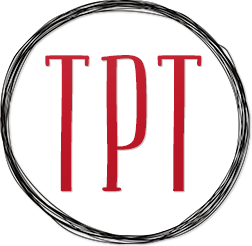I teach special ed in a resource room setting. I do mostly all pull-out, although I am going to try do more push-in services for my Kindergarten and 1st grade students. I'm not sure how it will work with scheduling though.
I really, really want to do some sort of Daily 5 with 3rd grade students that I pull for reading. I'll be starting the year with 5 3rd graders that I will be pulling from 2 different classrooms. So their schedules should be similar, which means I should be able to pull them for the reading block at the same time. This will be a HUGE improvement over last year. I do have to use the Corrective Reading (probably Decoding B1) intervention series with them daily. Last year, it took me about 45 minutes to do one entire lesson though, even though I rarely got to do an entire lesson in one day thanks to scheduling.
Has anyone used some sort of Daily 5 in the resource room setting? Does anyone think this could work or have any idea of how it could work? My semi-plan at this moment is to do this for an 1.5 hour reading block:
30 min - Corrective Reading lesson (and if I don't get a lesson done in one day, we'll finish it the next day)
30 min - Guided reading (because I just don't feel like Corrective Reading helps with comprehension at all) and Word Study time
30 min - Chapter read aloud, 20 min of independent reading, and AR time (I'm not sure if that will all work)
I'm not really sure if this will work, but it has to be better than last year's merry-go-round of kids coming and going all day long so I felt like nothing was done effectively. I'd really appreciate other special ed teachers letting me know how they do things and if they can use Daily 5.
Now onto the freebie, which looks like this:
Next Friday will be orientation for all of the students to come to school and find out who their teacher will be and see their new rooms. Last year, not many of my students came by my room to meet me. I do know most of my students already, but I still want to see them and talk to their parents. It's nice to see the parents at times other than IEP meetings. And I moved rooms, so I want the kids to know that as soon as school starts. I made these cards to put on their desk in the general education classrooms. I hope that the parents will see it and bring their kids on by in my room. I'm not sure how effective it will be, but it can't hurt! There are 2 versions. One is for students that I already know from last year. The other is for new students that were either in the self-contained classroom and are transitioning to general ed or they are new to the district. I've also included two different cards with different graphics.
By the way, have you guys visited Digi Scrap Kits? They're having a great sale until August 17th where their kits are $0.88!!! I loaded up yesterday and may have to go back today for some more. I got these graphics by Trina Clark there.
Long I CVCe Unit
I've finished all the games/activities for the 2nd (or maybe 3rd) word study unit, which is all about Long I CVCe words.

It's been a little time consuming to make all these materials, so I'm starting to get a little concerned about being able to have everything done this year. I have a feeling I'm going to be making the games every week right before I teach the unit! Ahhh!!! That's going to be stressful!
The first game in the unit is Diving for Long I. This game concentrates on CVCe words only.

It's been a little time consuming to make all these materials, so I'm starting to get a little concerned about being able to have everything done this year. I have a feeling I'm going to be making the games every week right before I teach the unit! Ahhh!!! That's going to be stressful!
The first game in the unit is Diving for Long I. This game concentrates on CVCe words only.
The next game is Hive Memory. It's a word to picture memory game focusing on CVCe words. There is a recording page at the end to help reinforce the skills and give some accountability.
Hike for Long I (there's a theme here with the names of these games) includes short I and long I CVCe words. A recording sheet is also found at the end.
Finally, there's a Long I CVCe word building activity.
Short Vowel Safari
In between moving classrooms, making several to-do lists, and enjoying my last few days of summer break, I've been thinking about my 3rd grade word study program {you can find it here}. Tonight, I made this game. Click on the picture to check it out in my TpT store (sorry but this is no longer a freebie).
I decided that I am going to make my first unit be a short vowel review. The first full week that I have students will be a 4-day week anyway. I didn't want to waste the week by not starting our word study yet. I figure this will be a good way to introduce the students to my expectations and get back in the swing of things. I haven't made my word study list yet for this unit (on the to-do list though!), but I made this game tonight to use during that week. There's also a printable activity at the end to reinforce the skill. I'll also have a few first graders and kindergarteners that can play this game during the year, so it should serve several purposes.
I decided that I am going to make my first unit be a short vowel review. The first full week that I have students will be a 4-day week anyway. I didn't want to waste the week by not starting our word study yet. I figure this will be a good way to introduce the students to my expectations and get back in the swing of things. I haven't made my word study list yet for this unit (on the to-do list though!), but I made this game tonight to use during that week. There's also a printable activity at the end to reinforce the skill. I'll also have a few first graders and kindergarteners that can play this game during the year, so it should serve several purposes.
Math Fact Fluency, Class Rules, and Reading Incentive Chart...
Math Fact Fluency
Last year, I started using Dad's Worksheets to help my students practice their math facts. Since I teach special education, my students needed a lot of daily practice with their facts.
If you go to the Dad's Worksheets site {here}, you will see on the right-hand side a menu bar. When you click on addition, subtraction, multiplication, or division, the first or second option will be a link called Space Ship Math. That will take you to a page that looks like this:
There are leveled worksheets that build upon each other in a systematic fashion. There are 4 versions of each level, and they go from A to Z with A being the easiest and Z being the hardest. I use these sheets daily for fact practice. I started in November last year with addition. I had one student who got through all the addition levels and part way through subtraction. The other students were still working on the addition levels at the end of the year.
I used a file like this to organize the sheets by level:
I gave my students 2 minutes to work on their leveled sheet. They would only level up if they completed ALL of the problems in 2 minutes and they did not miss more than 3 problems. This may be too much time or too many problems missed for a general ed student, but it was difficult for my students. If they leveled up, they got to pick what cheer they wanted the class to do for them and a small piece of candy. Once they completed the entire chart, I let them pick a prize from the prize box.
My kids loved doing this every day. They called it their "times test" and wanted to do it everyday. They were really proud of themselves when they leveled up and were always counting down. I'll be doing this again this year in hopes of improving my students' math fact fluency. Below is the chart I used to record their progress. Click on the picture to get your own copy and the label for the accordion file.
Class Rules Posters
I found this great website with FREE clip art that can be used for nonprofit use. Others may know about Phillip Martin's site, but I ran across it by accident tonight. Click {here} to check out his work. I wanted to revamp my class rules this year, so I made a few quick posters. Click the picture below if you think you can use them.
Reading Incentive Chart
My school participates in the AR reading program. There are school-wide rewards (each grade level has higher points needed to get their star on the wall) and many of my students' general ed teachers have class rewards. However, some of my students didn't really buy into the AR program, and it started to feel like it was something I was "nagging" them about every week. I wanted to do something in my classroom as an extra incentive.
My students are struggling readers and have to work extra hard to read. Sometimes, I feel like it's very discouraging to them when they see their general ed peers whipping through harder, bigger, "older" books and earning lots of AR points. I want them to feel equally successful and get recognized for their own accomplishments.
So this year, I decided I would make my own class incentive program. Each child will get their own reading chart (there are 4 in the download). For every book that they read, take the test, and pass the test with an 80%, I will put a star sticker on their chart. Once their chart is full, they can pick a prize from the prize box or earn a reward like free game time. There are spaces for 20 stickers. I feel like 20 books is an achievable goal for my students. If I see some students are really struggling, I'll probably cut the bottom stars off so they can feel successful by only having to read 10 books to get a prize and then work up to reading 20 books. Click on the picture to get your own set of incentive charts.
Crate Seats and Cheap White Erase Boards
I saw this super cute idea on ProTeacher and just had to create some myself. You can click {here} to the original post and pictures. I set out today to make my own set. Here's the what the final set looks like (please excuse the picture quality from my Iphone). P.S. I know the spacing is a little funky but Blogger is not cooperating with me at all tonight. :/

Now onto how we (my hubby and I) made these today.

I headed out to get all the supplies I needed. Let me start by saying that dragging 5-year-old triplets along to shop
for cutesy stuff for your classroom does NOT make for the best shopping experience for yourself or the other customers. I found my crates at Target for less than $4. They had black, lime green, aqua, and pink ones. You're also going to need cute coordinating ribbon, some board, something to cover the seat, adhesive glue, and some little tacks.

To cover the seats, I used bath mats that I found at Target. I found these at Target for about $4 a piece. My husband found a nice piece of board at Lowe's that was already sanded on both sides and big enough to make 3 seats for about $13. He was kind enough to cut each piece to fit right inside the crates and rest on the inside lip. I used these pieces to trace the correct size onto the mat and cut the pieces out.

We used this adhesive spray to attach the mats to the boards. Be warned that this stuff is SUPER strong spelling and should be used outside.

To be extra sure that the mats stayed put we used these little fabric u-shaped nails to secure them to the board.

We used those same u-hook fasteners to attach the ribbon to the bottom side of the boards.
And that's all there was to it! I plan on my students using these for independent reading time throughout the room. I haven't decided what I will use the storage area for yet.
On another note, did you know that Lowe's sells marker board that they will cut into pieces for you? I had heard other teachers mention this but hadn't gotten any myself until today. The marker board was less than $12, and it was big enough to be cut into 8 pieces that are about 16 x 12 inches in size.

Subscribe to:
Posts (Atom)


















